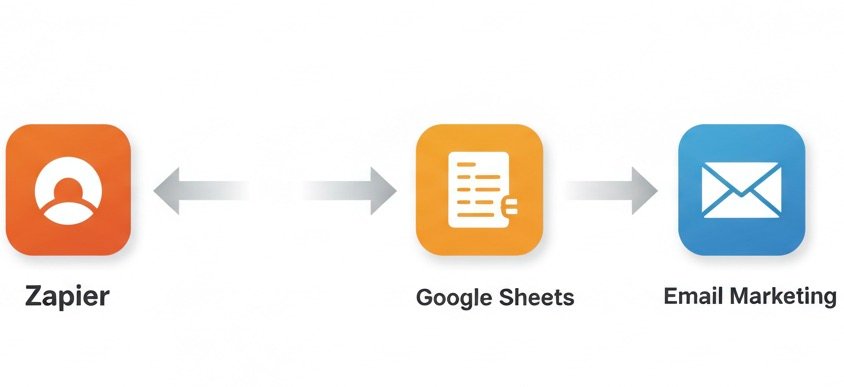Freelance brand scaling
So, you’ve nailed the freelance game. You’ve got clients, you’re delivering great work, and your income is steady. But now you’re asking yourself: “What’s next?”
Welcome to the world of freelance brand scaling — the art and science of growing your personal freelance brand into a strategic, sustainable business. Whether you’re a freelance writer, designer, copywriter, or consultant, scaling means reaching more people, earning more income, and building a brand that works for you — not the other way around.
In this guide, we’ll walk through the exact steps successful freelancers use to evolve from one-person hustle to recognizable brand. From clarifying your message and building systems, to SEO, delegation, and tax-smart decisions — you’ll learn how to work smarter, not harder in 2025 and beyond.
Let’s dive into the smart, scalable way to grow your freelance brand — without burning out.
What Is Freelance Brand Scaling?
If you’re already landing gigs and managing client work, the next step is scaling your freelance brand. But what does “scaling” really mean?
Freelance brand scaling means growing beyond the one-to-one hustle — transforming your personal name or business into a systematic, trusted, and recognizable brand that works even when you’re not working.
👇 Common Examples of Scaling:
- Raising rates without losing clients
- Building recurring income through products or retainers
- Delegating work via subcontracting
- Expanding your online visibility through SEO and PR
- Turning your brand into a business
Why Freelancers Need to Think About Scaling
When you’re booked out and burned out, scaling becomes a survival tool — not just a growth tactic.
Here’s why scaling your freelance brand matters in 2025:
- Clients trust brands more than individuals
- You need systems to avoid burnout
- You can generate income beyond your time
- You’ll attract better clients who pay premium rates
👉 Already wondering how? Let’s break it down.
1. Clarify Your Brand Identity

Before you scale, define who you are as a brand.
Questions to Ask Yourself:
- What do I want to be known for?
- Who is my ideal client?
- What do I offer that others don’t?
- What tone of voice matches my work?
Create a one-liner for your freelance brand:
“I help SaaS companies drive traffic and leads through conversion-focused copywriting.”
That sentence will guide your website, proposals, LinkedIn, and beyond.
How to Build a Personal Brand – Forbes
2. Build a Professional Web Presence
You can’t scale a brand no one can find. Here’s how to solidify your online footprint:
Essentials for 2025:
- A fast, mobile-friendly website with a clear CTA
- An optimized LinkedIn profile (headline, banner, About section)
- Google Business Profile (if you offer local services)
- Authority-building blog posts with keywords
If you haven’t already, launch your freelance website using a fast theme (like GeneratePress) and use caching tools like LiteSpeed Cache or Flying Scripts for better performance.
Need help estimating taxes for your growing freelance income? Try our Freelance Tax Calculator.
3. Optimize for SEO & Thought Leadership
Search traffic = scalable visibility. Unlike social media, SEO builds momentum over time.
Keyword Ideas for Freelancers:
- “freelance writer side hustle”
- “how to find freelance clients in 2025”
- “freelance tax deductions”
- “how to scale a personal brand”
Start blogging consistently. You can use your posts to:
- Attract leads
- Showcase expertise
- Rank for long-tail keywords
- Get backlinks for authority
4. Productize Your Services
Freelancers often trade time for money. That model is hard to scale. One powerful solution is productizing.
What Does That Mean?
- Turning your service into a fixed-scope, fixed-price offer
- Packaging deliverables (e.g., “Homepage Copy: $500 flat”)
- Creating DIY digital products (e.g., templates, workbooks, courses)
Productized services reduce custom work, simplify pricing, and allow you to sell more with less effort.
5. Streamline Your Client Onboarding Process

A clunky onboarding process kills momentum and makes you look unprofessional.
A strong brand uses systems.
Tools like HoneyBook, Dubsado, or Notion can help automate:
- Proposals & contracts
- Invoices & payments
- Intake forms
- Project timelines
Set up email sequences or thank-you pages that wow your clients right after signing.
Bonus: Your software and CRM subscriptions are freelance tax deductions.
6. Use Social Proof to Multiply Trust
Scaling your brand = scaling trust. The fastest way to build trust is to let others talk about you.
Social Proof That Scales:
- Written or video testimonials
- Google or LinkedIn reviews
- “As featured in…” press mentions
- Portfolio case studies with stats
Create a “Client Success” page on your site and link to it from all proposals.
How to Ask for Testimonials – HubSpot
7. Build an Email List
If your brand lives only on social media, you’re at risk. Email is still king when it comes to ownership and engagement.
Start with:
- A freebie download (checklist, template, calculator)
- Simple landing page (use ConvertKit, MailerLite, or Mailchimp)
- A welcome sequence (3–5 emails building trust)
Nurture your audience with updates, promotions, or helpful articles (like this one!).
8. Collaborate or Subcontract Strategically
When work overflows, don’t just turn down clients — build a mini team or referral network.
Who to Hire First:
- A VA (virtual assistant)
- A junior freelancer you can train
- A designer, editor, or developer to round out your service package
You can white-label your services or split revenue on multi-freelancer projects.
9. Revisit Your Pricing Model
If your demand is increasing, it may be time to raise your rates or switch to value-based pricing.
Instead of:
“Blog post: $200”
Try:
“SEO blog strategy to drive leads: $1,000/month”
Clients don’t pay for hours. They pay for outcomes.
10. Track Financials & Plan for Taxes
As you scale your brand, your income becomes more complex — and tax surprises become more likely.
Use tools like:
- QuickBooks Self-Employed
- Wave Accounting
- Notion or Google Sheets for tracking invoices
Most importantly, stay on top of quarterly taxes. Use our Quarterly Tax Deadlines & How to File guide to avoid penalties.
You can also deduct:
- Business meals
- Website expenses
- CRM subscriptions
- Contractor payments
- And more — see our Top 10 Freelance Tax Deductions
Helpful Tools for Freelance Brand Scaling
| Tool / Platform | Purpose |
|---|---|
| GeneratePress | Fast, lightweight WP theme |
| Formidable Forms | Custom form builder |
| ConvertKit | Email marketing + lead magnets |
| Loom | Client videos & onboarding |
| Notion | Proposal templates + task mgmt |
| Google Analytics v4 | Track your growth |
| FreelanceTaxCalc.com | Tax calculator & freelancer tips |
Wrapping It All Up: Scaling Smart, Not Just Fast

Scaling your freelance brand isn’t about doing more — it’s about doing better.
Whether you’re just starting to feel the limits of solo work or you’re ready to level up your business in a serious way, brand scaling helps you build smarter systems, attract higher-paying clients, and create long-term stability.
From sharpening your niche and strengthening your online presence to optimizing for SEO, automating client processes, and planning your finances — each step you take builds momentum.
And remember: you don’t need to scale overnight.
Start with one small improvement, like updating your website, creating a repeatable offer, or even using our freelance tax calculator to make better financial decisions. Those tiny steps today? They compound into serious growth tomorrow.
Because when you scale with strategy, your freelance business stops being a job—and starts becoming a brand that lasts.

